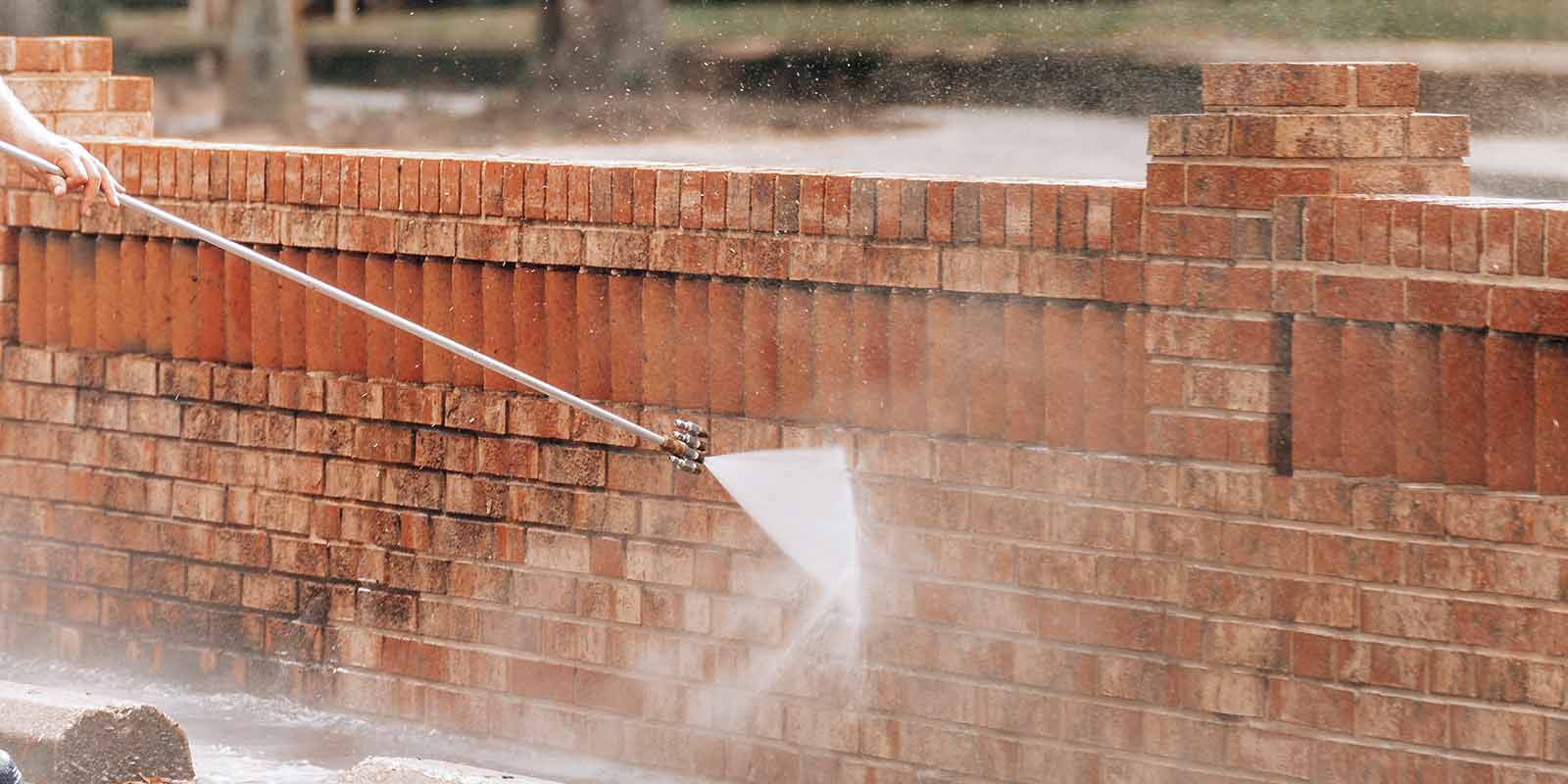
Antique brick has a rustic, timeless charm that newer materials just can’t replicate. Whether it’s part of a historic home, patio, walkway, or garden wall, old brick adds character and warmth. But when it comes time to clean it, one wrong move with a pressure washer can cause serious, irreversible damage.
So how do you power wash antique brick without eroding the surface or damaging mortar joints? In this guide, we’ll break down the safest techniques, tools, and best practices for pressure washing aged brickwork the right way. 🧼🏡
🧱 What Makes Antique Brick So Fragile?
Unlike modern brick, antique brick is often:
- Softer and more porous
- Made with older clay mixtures
- Held together with weaker lime-based mortar
- More susceptible to chipping, cracking, or erosion
In short, these bricks weren’t designed to withstand 3,000 PSI blasts from a gas-powered washer. Without careful technique, a pressure washer can eat away the brick face, strip away mortar, and leave the surface permanently scarred. ❌
✅ What You’ll Need (The Safe Way)
To clean antique brick without damage, use:
- Electric pressure washer (1,000–1,500 PSI max)
- 40° (white) or 25° (green) nozzle
- Garden hose with spray nozzle
- Masonry-safe cleaner (biodegradable)
- Soft-bristle brush
- Pump sprayer or bucket
- Safety glasses and gloves
- Plastic sheeting (to protect windows or wood trim)
⚠️ Avoid 0° or turbo nozzles. They are way too aggressive for antique brick.
Browse Amazon Here For Top Rated Power Washers And Accessories
🛠️ Step-by-Step Guide: Cleaning Antique Brick Without Damage
1️⃣ Inspect and Test First
Before cleaning anything:
- Check for loose or crumbling bricks
- Look for missing mortar or deep cracks
- Do a spot test in a hidden area to gauge how the brick reacts to water and cleaner
If any damage is found, repair it before cleaning with a power washer.
2️⃣ Pre-Wet the Surface
Use your garden hose or low-pressure setting to:
- Saturate the brick surface with water
- This keeps the brick from absorbing cleaner too quickly
- Reduces the chance of streaking or spotting
💧 Never apply cleaner to a dry surface—it will absorb unevenly.
3️⃣ Apply Masonry Cleaner
Use a gentle, non-acidic brick cleaner (or diluted dish soap) in a pump sprayer or bucket:
- Spray it evenly across the surface
- Let it dwell for 5–10 minutes
- Do not let it dry completely
4️⃣ Gently Scrub by Hand
Before pressure washing:
- Use a soft-bristle brush to loosen surface dirt and algae
- Focus on crevices and mortar joints
- Avoid aggressive scrubbing—especially near corners or edges
5️⃣ Begin Pressure Washing (Low and Slow)
Use a 40° nozzle and start at low pressure:
- Stand 3–4 feet back and gradually move closer
- Hold the wand at a 45° angle to the surface
- Clean in wide, overlapping strokes
- Start at the top and work downward
- Keep the wand moving at all times to avoid dwell marks
🧱 Never spray directly into mortar lines. This can loosen and dislodge the joint compound.
6️⃣ Rinse Thoroughly
Once clean:
- Use your pressure washer or garden hose to rinse off remaining soap
- Inspect for areas that may need additional scrubbing by hand
- Avoid blasting water into cracks or under eaves
❌ Mistakes to Avoid
- ❌ Using high-pressure washers (over 2,000 PSI)
- ❌ Spraying head-on at mortar joints
- ❌ Using bleach or muriatic acid
- ❌ Skipping the pre-wet and dwell time
- ❌ Using metal brushes (they scratch and damage surfaces)
🌿 Eco-Friendly & Preservation Tips
- Use biodegradable masonry cleaners
- Prevent runoff into plants or storm drains
- Rinse nearby landscaping with water before and after
- Repoint mortar after cleaning if necessary to maintain structural integrity
🗓️ When Should You Clean Antique Brick?
| Situation | Cleaning Frequency |
|---|---|
| Annual maintenance | Once per year (preferably spring or fall) |
| Post-construction dust | As needed |
| Heavy algae or mold | Every 6–9 months |
| Preparing for painting or sealing | Immediately before application 🎨 |
🧼 Aftercare: Protecting the Brick
Once clean and dry, consider:
- Repointing weak mortar (use lime-based mortar for historic bricks)
- Applying a masonry sealant (breathable, non-glossy type only)
- Keeping vines or moss growth in check to prevent long-term damage
- Installing drainage or splash guards to reduce future staining
💬 Final Thoughts
Antique brick is beautiful, but it’s also delicate. With the right tools and a gentle approach, you can clean it thoroughly without risking irreversible damage. Pressure washing can be safe—when done with precision, patience, and the lowest effective pressure possible. 🧱🧽
Remember: you’re not just cleaning a surface—you’re preserving a piece of history.
Browse Amazon Here For Top Rated Power Washers And Accessories



